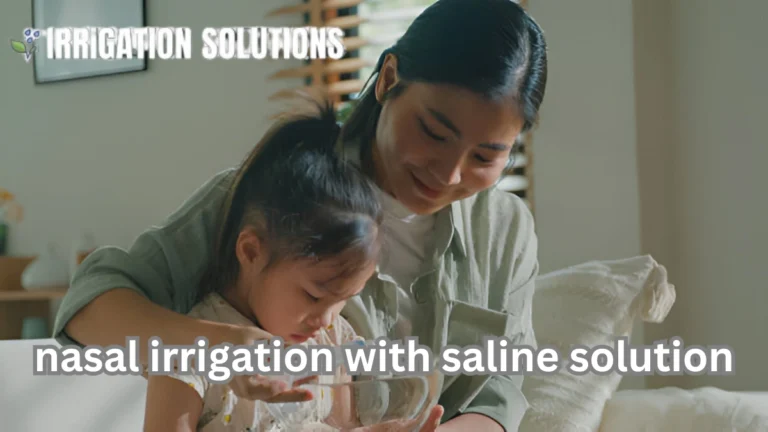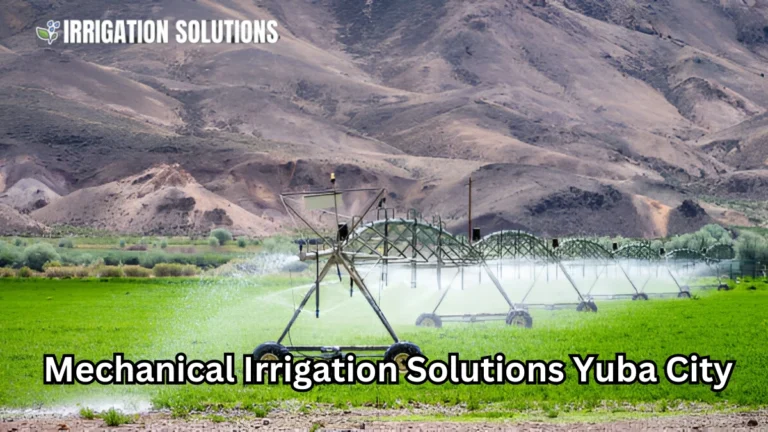Best solutions used for eye irrigation

Eye irrigation is a vital procedure used to flush out foreign particles, chemicals, or irritants from the eye to prevent injury or infection. Whether you’re dealing with a mild irritation or a more serious exposure, proper eye irrigation can make all the difference. In this blog post, we will explore the different solutions used for eye irrigation, their uses, benefits, and when to use them.
What is Eye Irrigation?
Eye irrigation is the process of rinsing the eyes with a sterile solution to remove substances that can cause harm or discomfort. It is often used in emergency situations, especially when chemicals, dust, or other harmful particles enter the eye. The goal is to remove the irritant quickly and prevent further damage.
Why is Eye Irrigation Important?
The eye is a delicate organ, and exposure to harmful substances can lead to serious consequences. When substances like dust, pollen, smoke, chemicals, or even water splash into the eye, they can cause discomfort, irritation, or even long-term damage. Irrigation helps to remove these substances and reduce the risk of infection or injury.
Different Solutions Used for Eye Irrigation
Various solutions are used for eye irrigation, each with specific advantages depending on the type of irritant or emergency. Here are some of the most common and effective solutions:
Saline Solution
Saline solution, also known as sterile saltwater, is one of the most widely used solutions for eye irrigation. It is a mixture of salt (sodium chloride) and water, designed to match the salinity of bodily fluids. This makes saline a gentle solution that does not irritate the eye further.
Benefits of Saline Solution:
- Safe and non irritating: It mimics the body’s natural fluids, making it gentle on the eyes.
- Widely available: You can easily find saline solution in most pharmacies, and it’s often used in first aid kits.
- Versatile: It can be used to rinse away a variety of irritants, such as dust, smoke, and pollen.
How to use: Simply tilt your head to the side, hold the saline bottle above the eye, and allow the solution to flow into the eye. Blink several times to ensure the solution rinses the eye thoroughly.
Sterile Water
Sterile water is another common solution used for eye irrigation. It is purified and free from contaminants, making it suitable for cleaning the eyes. However, it does not contain the saline content that is found in saline solutions, which means it may not be as gentle in certain cases.
Benefits of Sterile Water:
- Simple and effective: It can be used to flush away irritants.
- Widely accessible: Sterile water is often used in hospitals and clinics for various procedures.
- Quick relief: It can provide immediate relief for minor irritations caused by water or dust.
How to use: Similar to saline solution, use a sterile water bottle or eyedropper and flush the eye with a steady stream. You can also immerse the eye in a cup filled with sterile water if that is more convenient.
Eye Irrigation Solution (Eye Wash)
Eye wash solutions are specifically formulated to clean and soothe the eyes. They typically contain a combination of saline, buffered water, and sometimes additional ingredients like preservatives or soothing agents. These solutions are often used in industrial settings or during chemical exposure incidents.
Benefits of Eye Wash Solutions:
- Tailored for eye health: They are designed to be gentle and effective for sensitive eyes.
- Prevents further irritation: Often contains mild preservatives or soothing agents.
- Provides quick relief in emergencies: Specifically designed for flushing the eyes of contaminants.
How to use: Eye wash solutions are often available in bottles or as pre-packaged eye wash stations. To use, simply tilt your head back or use an eye wash cup to allow the solution to rinse through the eyes.
Commercial Eye Irrigation Products
Various commercial products are available for eye irrigation, including pre packaged, ready to use saline or irrigation solutions. These products are designed for convenience and are often used in hospitals, clinics, and first aid kits.
Benefits of Commercial Eye Irrigation Products:
- Convenience: Ready to use, no need for mixing or preparation.
- Compact and portable: Easy to carry for use in emergencies or workplaces.
- Sterile and safe: Ensures proper hygiene and avoids the risk of contamination.
Examples:
- Physiologic saline eye drops
- Eye wash stations
- Portable irrigation bottles
How to use: Follow the instructions on the product. Generally, you would hold the bottle over the eye and allow the fluid to flush the eye for several minutes. Always make sure to dispose of the bottle properly after use.
Special Irrigation Solutions for Chemical Exposures
In cases of chemical exposure, more specialized irrigation solutions may be necessary. These solutions are formulated to neutralize the chemical irritants, providing more targeted protection and relief.
Benefits of Special Irrigation Solutions:
- Neutralizes chemicals: Certain solutions are designed to balance the pH of the eyes after exposure to strong acids or bases.
- Specific to chemical types: Some products are tailored for specific chemical exposures, such as acids or alkalis.
- Quick intervention: These solutions are used in emergency situations to mitigate the impact of harmful chemicals on the eye.
How to use: Chemical eye wash stations or portable eyewash bottles should be used immediately in the event of exposure. The eye should be flushed for a minimum of 15 minutes to ensure thorough rinsing of the chemical.
When to Use Eye Irrigation
While eye irrigation can be helpful in a variety of situations, knowing when to use it is just as important. Here are some scenarios where eye irrigation is necessary:
- Exposure to foreign objects (e.g., dust, sand, or dirt): If an object gets stuck in your eye, irrigating the eye with saline can help flush it out.
- Chemical exposure: If harmful chemicals like cleaning products, bleach, or industrial chemicals get into the eye, irrigation is crucial to minimize damage.
- Allergies: For those who suffer from eye allergies, rinsing the eyes with saline or an eye wash solution can relieve discomfort.
- Infection prevention: If you have a mild eye infection, gentle irrigation with sterile water or saline can help clean the eye and reduce the risk of further irritation.
How to Perform Eye Irrigation
To properly irrigate the eye, follow these steps:
- Position yourself comfortably: You can sit or stand, but make sure your head is tilted backward to allow gravity to assist in flushing the eye.
- Use the solution: Whether it’s saline, sterile water, or an eye wash solution, ensure you have a clean and sterile bottle or container for the fluid.
- Apply the solution: Pour or flush the solution over the eye, ensuring it flows freely. Hold your eyelids open if necessary to allow the solution to rinse thoroughly.
- Blink gently: After the solution has flushed the eye, blink to help clear any remaining irritants.
- Repeat if necessary: If the irritation persists, repeat the process until relief is felt.
Eye Irrigation Stations in Workplaces and Laboratories
In many industrial settings, laboratories, or workplaces where chemical exposure is a concern, eye wash stations are mandatory. These stations provide immediate access to eye irrigation solutions, ensuring that workers can quickly respond to accidents.
Features of Eye Irrigation Stations:
- Plumbed systems: These stations are connected to a water source and can provide continuous irrigation.
- Portable options: Small, portable bottles or eye wash cups can be placed in workstations for easy access.
- Pre packaged solutions: Some stations offer ready-to-use saline or neutralizing solutions for specific exposures.
Case Studies
Case Study 1: Chemical Exposure in the Workplace
In a chemical manufacturing plant, an employee accidentally splashed a caustic substance into their eye. Immediate eye irrigation was essential to prevent permanent damage. The employee used an emergency eye wash station, flushing their eye with a buffered saline solution for 15 minutes. This quick intervention minimized the risk of long-term injury.
Case Study 2: Allergic Reaction in a Classroom
A teacher with pollen allergies experienced significant eye irritation after spending time in a garden. She used a saline solution to flush her eyes, providing immediate relief from itching and redness. Regular irrigation helped her manage seasonal allergies during peak pollen months.
Conclusion
Eye irrigation is a simple but essential process that can help protect your eyes from potential harm. Whether you’re dealing with a foreign object, chemical exposure, or allergic reactions, using the right irrigation solution can make all the difference in preventing damage and promoting healing.
By understanding the different solutions available and knowing when and how to use them, you can ensure that your eyes stay safe and healthy. Always remember to act quickly in the event of an eye emergency, and don’t hesitate to seek professional medical help if needed.






